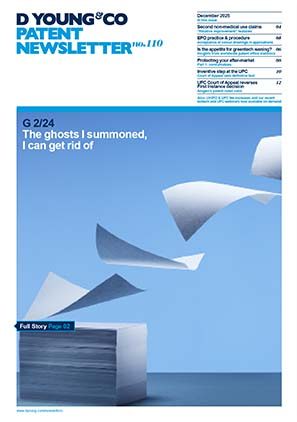T 1952/18 – prior use and inventive step
T1952/18 relates to an appeal against the decision to maintain European patent EP2512840 in its granted form. The appellant (opponent) requested that the patent be revoked while the respondent (patentee) requested that the patent be allowed in an amended form.
The invention in question relates to the bumper on a car. A bumper typically is made up from a bumper bar with a number of “crash boxes” that are designed to deform in the event of a crash. It is important that the crash boxes deform in a similar manner or their effectiveness can be inhibited. The invention is concerned with the inclusion of a towing eyelet. This can be achieved by the connection of a threaded sleeve into which the towing eyelet can be screwed. However, as a consequence of pulling the towing eyelet at an angle, the crash box can, if used, deform irregularly. The invention seeks to solve this problem by a particular arrangement of the sleeve in respect of the crash box.
The appellant provided evidence of prior use of a similar bumper prior to the priority date of the patent. This was demonstrated by technical drawings of the bumper, an affidavit from a manufacturer of the bumper, and a registration certificate and photographs of a vehicle containing the bumper.
The European Patent Office (EPO) noted that this evidence did not lie within the power and knowledge of the opponent because the patentee could have had similar access to the alleged prior art. The standard of proof required was therefore a “balance of probabilities” (as opposed to “up to the hilt”) and this threshold was met.
In this case, the abundance of evidence was clearly persuasive and the Board of Appeal decided that the prior use was legitimate prior art. However, the Board of Appeal’s view was that two features (s) and (t) were not known from this prior use:
s) “and the bumper bar has a protuberance (21) in which the hole (16) of the bumper bar is located”
t) “the cover (13) has an indentation (15) directed into the crash box in which the hole (16) of the cover is located”
The Board of Appeal argued that a technical effect to be solved over the prior use is to stabilise the towing eyelet or sleeve when it is pulled at an angle by providing the necessary axial distance between the coaxial holes in the bumper's front face and in the cover.
The Board of Appeal made a particularly interesting comment in respect of inventive step and the formulation of the objective technical problem. In particular, the Board of Appeal noted that the prior art (“OV11”) was a prior use representing a very specific concrete implementation of a bumper bar, where all components are parts were conceived, dimensions and tested in order to fit and cooperate together and mutually cooperate to obtain optimum results regarding crash and towing aspects, which included the sleeve. A technical problem of trying to adapt the axial distance between the coaxial holes was therefore unrealistic otherwise the overall design of the bumper bar would have been a different one.
This suggests that the fact that the prior art in question was an actual prior use (a concrete implementation) actually helped the proprietor. That is to say that since the prior art was a prior use, it was clear that each of the different elements of the bumper bar had to be carefully selected and balanced against one another, and simply modifying one element of the bumper bar was not realistic. The same argument could, of course, be raised against prior art in the form of a patent document. However, it is well established that a patent document, for instance, rarely contains every single last detail about the implementation of an embodiment of the invention and such a document therefore may leave open the possibility of certain parameters being changeable. In contrast, an actual prior use has been physically developed and therefore all existing parameters have been settled and finalised.
Precisely whether this was the message the Board of Appeal was trying to put across or not is unclear. However, such a decision potentially opens the door to the argument that prior uses are inherently less “changeable” than other forms of prior art due to having been more thoroughly (and concretely) designed. It will be interesting to see whether such an approach appears again in the future.


